Guide to the Global Village ~ Palestine Pavilion!

Oh, how I love the Palestine Pavilion. Since I don’t visit my husband’s country often, I get my Palestine fix wherever I can.
If you are unfamiliar with the Global Village, it’s a shopping and cultural extravaganza located outside Dubai. It runs during the winter months and represents 26 countries and two continents. To find out more, see my post Dubai’s Global Village ~ Where the World Comes together.
Granted, the Palestine Pavilion used to be bigger and better in the past. Sadly, the pottery vendor stopped coming several years back. Likewise, the thob (hand-embroidered caftan) seller from Jerusalem no longer comes.
Alas, nothing stays the same!
What most visitors to the GV don’t realize is that it’s a great expense for vendors to come and sell their wares here. A large sum is required to rent a stall. If vendors come from outside Dubai, they must stay in hotels and pay for daily transportation. Some vendors simply cannot turn over a profit. On top of that, it can be quite complicated for those from Gaza and the West Bank to get their goods to Dubai.
And yet. There are still Palestinian vendors who make it. Many of them sell foodstuff, like these jokesters below.
For me, a visit to the Palestine pavilion has become food-shopping event. This year I bought delicious olive oil from Palestine, homemade strawberry jam, sumac and zataar (spices), pomegranate syrup, pickled eggplant, nuts and seeds. Here’s the nut vendor who insisted to give me complimentary sweets when he found out my Palestinian ties.
And I tasted a lot of samples of cheese in pita bread. A lot.
I also bought maftool, the large couscous pictured below in jars (whole wheat and regular). In the US, this is sold and labeled as “Israeli couscous.” However, please note that this type of large couscous is actually Palestinian, as Palestinians were making it by hand before the state of Israel was invented.
As usual, the Palestine Pavilion includes items carved out of olive wood “from the Holy Land.”—mostly rosary beads, nativity scenes, ornaments, crosses, etc. These are the typical items sold in Bethlehem and the Christian Quarter in Jerusalem.
Meanwhile, vendors here still sell Palestinian embroidery, typically red cross-stich on black, but also other colors and variations. Over the years, I have bought many hand-stitched dresses for my daughter at the Global Village—the iconic Palestinian thob. One year I bought a thob for myself—every inch hand-stitched, straight from Jerusalem. I love that thob.
Below is a sample of what is for sale this year.
Not surprisingly, it seems there is a gradual trend toward machine-stitching. While there are hand-stitched pillow covers for sale here, it seems that the floor-length caftans are mostly (if not all) machine-stitched. Again, nothing stays the same!
One thing we do every year is load up on patriotic accessories for my children to wear on International Day at their school. (All the nationalities do it!) This year my kids bought t-shirts, hats and scarves from this stall.
Finally, I caught the Palestinian cultural show inside the pavilion. It was a dramatic stage performance with dance. Even though I understood only a little of the dialogue, I enjoyed the music, dance and costumes.
If you’d like to know more about the Global Village see my posts: The Yemen Pavilion, The Iraq Pavilion, The Africa Pavilion, and The Turkey Pavilion.
What is your favorite thing to buy at the Global Village?
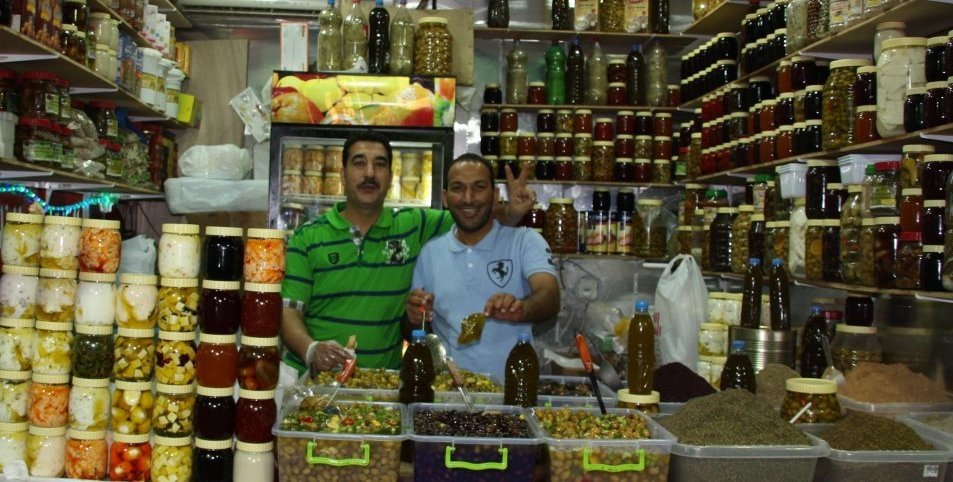
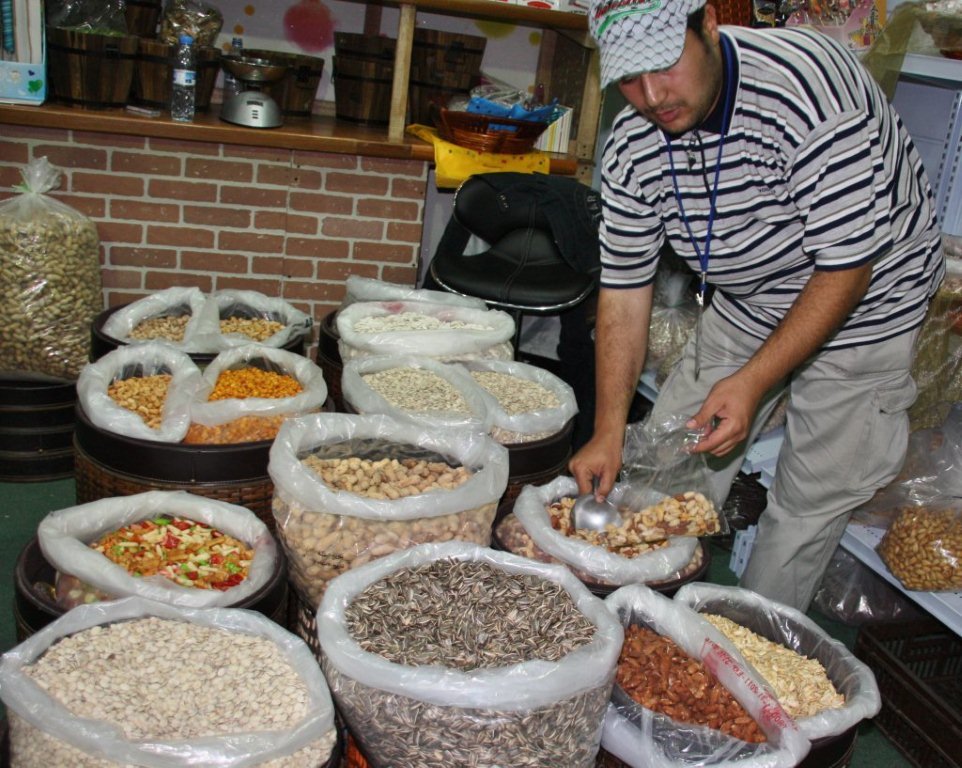
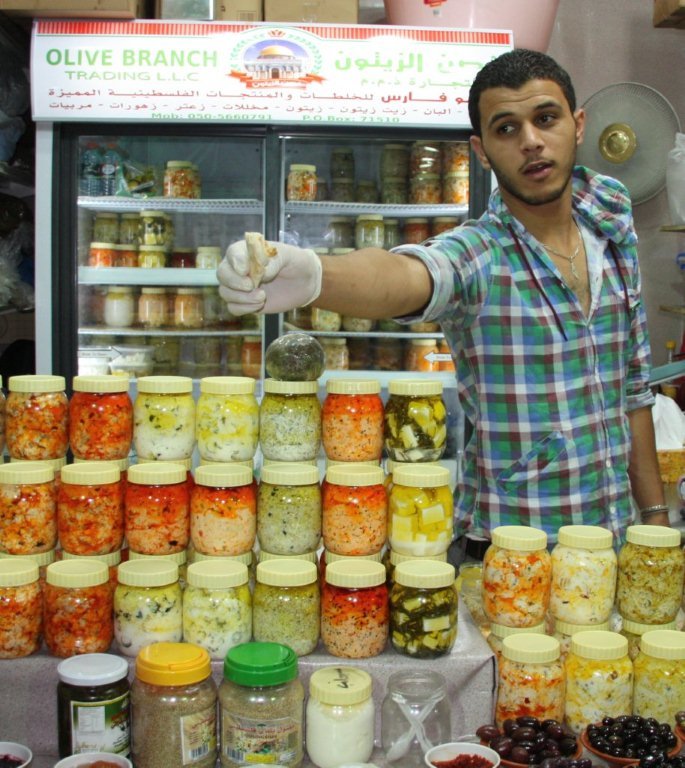

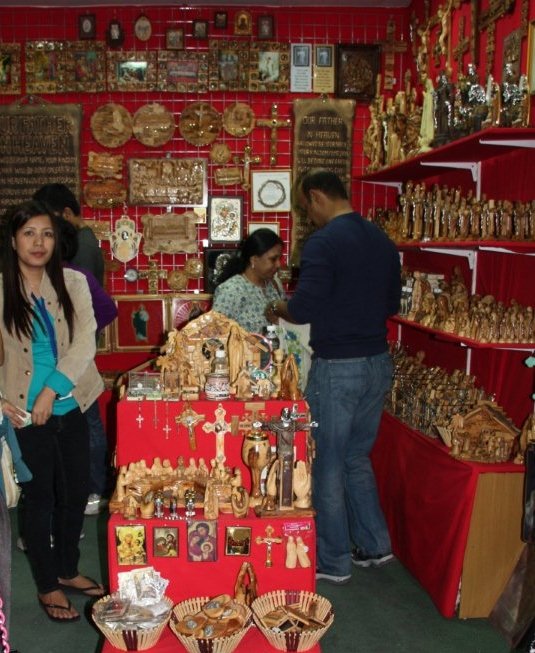
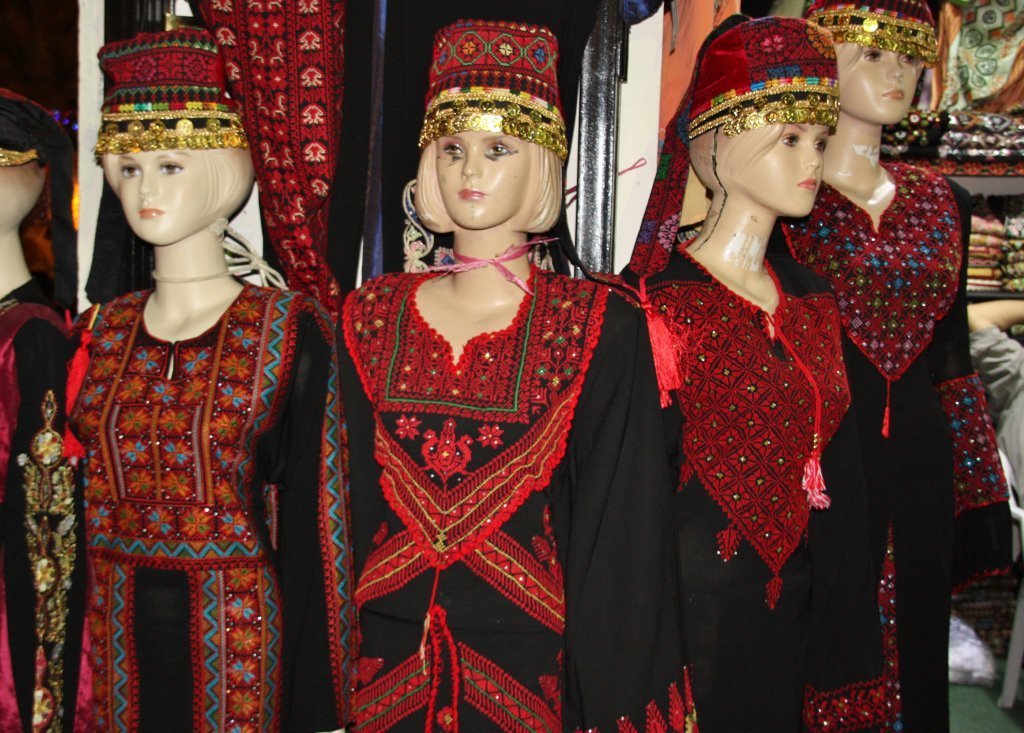

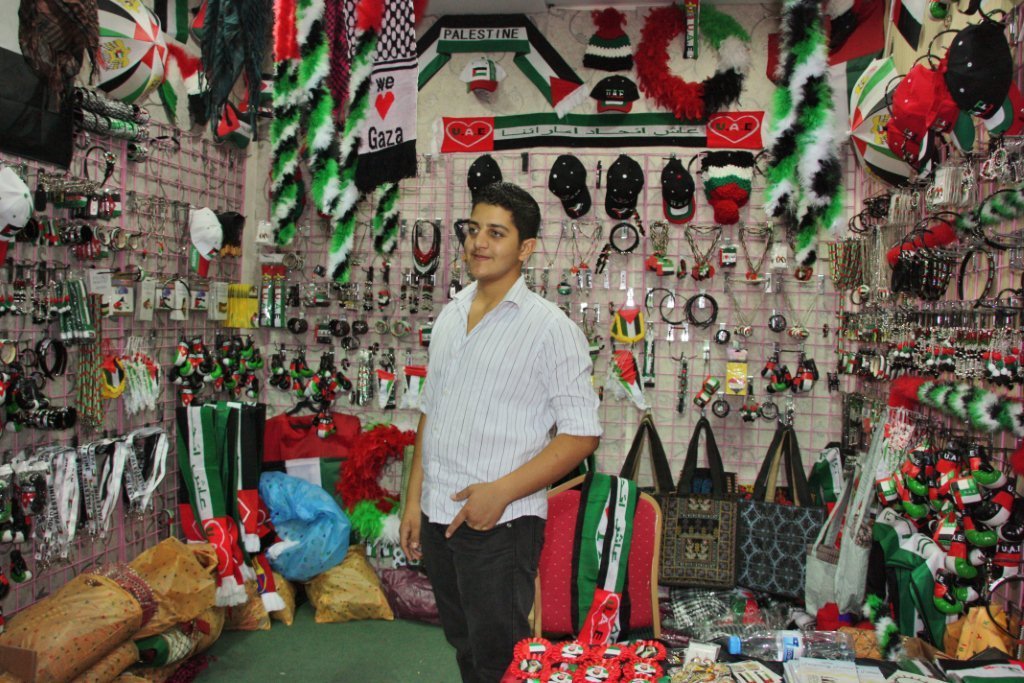
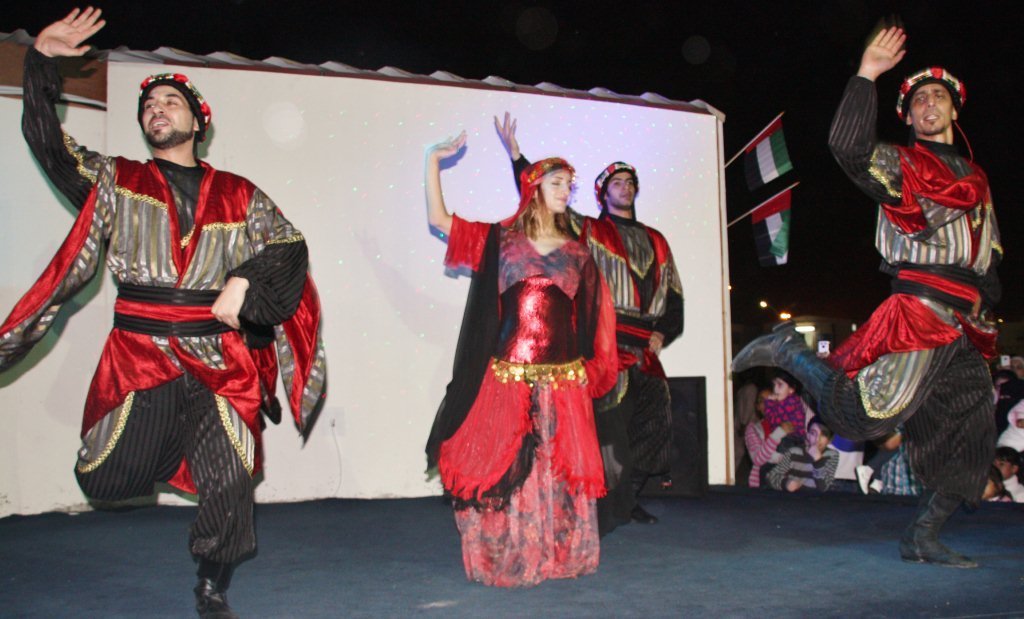
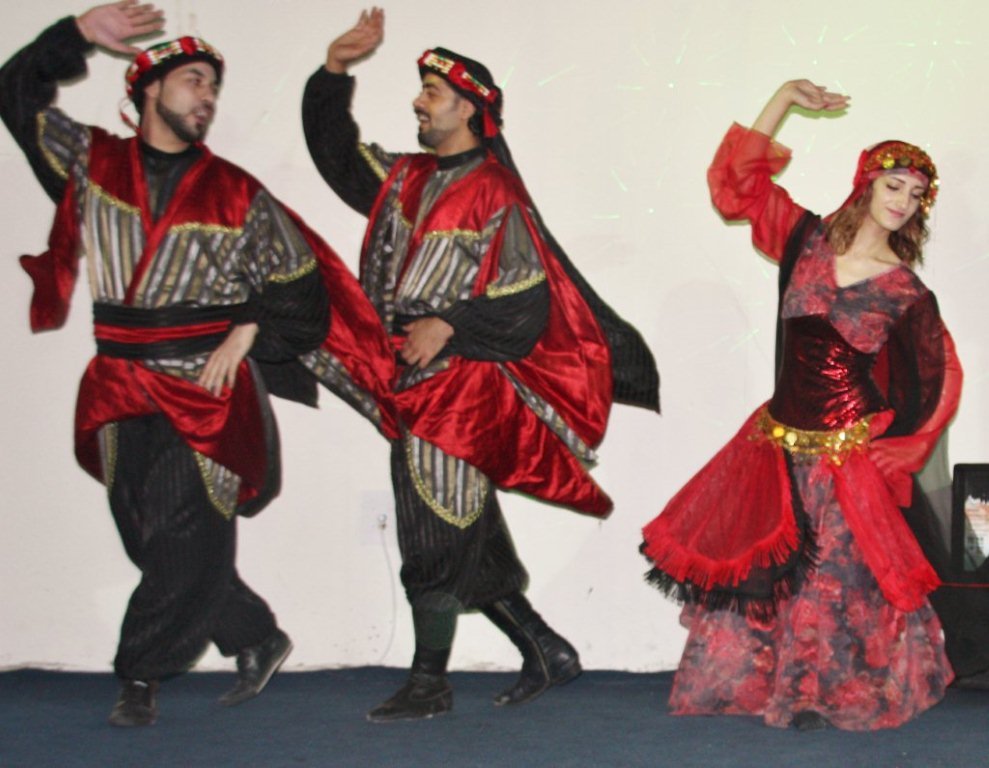

 Follow
Follow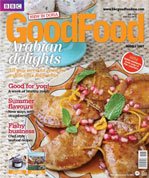
Lovely post Holly. Enjoyed your descriptions and explanations of various items. The photos are fantastic especially of the dance performance. Watching the dance shows is my favorite thing about Global Village.
Zvezdana, Thanks for sharing your enthusiasm on this topic. It always amazes me when people complain about the GV. It has so much to offer. The food! The dance! The music! The stuff!
https://plus.google.com/u/0/100146646232137568790/posts/NE1GgFeRe9c
Yum!
Hi holly
I’m trying to source Palestinian products here in Dubai to help the Palestinian cause in my humble way. Do you know where I can find Palestinian items or produce other than gv?
Thanks. Sumaaya
HI Sumaaya,
Well … Global Village IS a terrific place to buy Palestinian products directly from Palestinians. The only other place I can think of is THE ONE, which sells beautiful Palestinian craft items–like bracelets and pillow covers. They are very expensive, but part of the profit goes to help Palestinians.
All the best to you, Holly
In this economy, with cuts in budgets and spending, it’s important to shop wisely and with a conscience.
Around the world women support themselves and their families through traditional handicrafts. For Palestinian women, embroidery as an income-earning activity in the refugee camps was initiated in 1950 by the United Nations Works and Relief Agency (UNWRA). In 7 refugee camps in Gaza more than 400 grandmothers, daughters and grand-daughters work side by side. As the rate of unemployment in Gaza is now about 50%, the income earned from embroidery is essential for women and their families. Customers for our products know they are making a difference.
Please contact me by phone or email for orders and queries.
Thank you, Bilal ismail
“The craft of embroidery has existed for ages. It moved from past generations to the next. According to my parents, Bedouin women in Beir Shiva embroidered everywhere they went. They embroidered while they were feeding animals, or fetching water from the well. Embroidery teaches patience and how to be self-reliant.” Sanaa’ El Weheady
Thank you for your comment, Bilal. I have bought many hand-embroidered items from Palestine over the years. They are items I treasure. All the best to you.